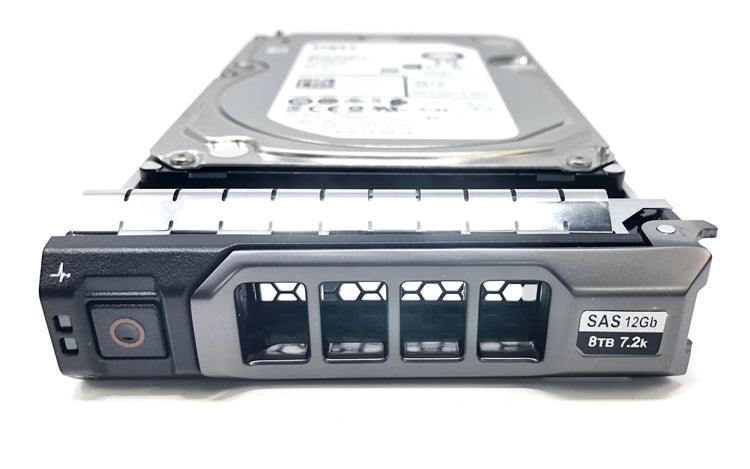Description
-
The 400-AHJD Dell 8TB SAS 7.2k 3.5" 12G 512e Hard Drive is a high-capacity hard drive designed for use in enterprise-level storage systems and servers. Here are some of its key features:
-
SAS interface: The SAS (Serial Attached SCSI) interface provides fast data transfer rates and is designed for 24/7 operation. The 12G interface offers faster data transfer rates than older SAS interfaces.
-
7.2k RPM spindle speed: The 7,200 RPM spindle speed provides a good balance between performance and energy efficiency.
-
8TB storage capacity: The 8TB storage capacity is suitable for storing large amounts of data, such as video and audio files, databases, and virtual machines.
-
512e format: The 512e format means that the hard drive uses 512-byte sectors with 4K byte emulation, which allows it to be used with older operating systems that do not support 4K native sector sizes.
-
3.5-inch form factor: The 3.5-inch form factor is a standard size for enterprise-level hard drives and is compatible with many storage systems and servers.
Overall, the 400-AHJD Dell 8TB SAS 7.2k 3.5" 12G 512e Hard Drive is a good choice for organizations that require high-capacity, reliable, and fast storage solutions for their mission-critical applications and databases.
Brand: Dell -
- Model: 400-AHJD
- Capacity: 8Tb
- Interface: SAS 3.5 inch
- Data Transfer Rate: 12Gb/s
- Rotational Speed: 7,200rpm
- Hot-swappable: Yes
- Caddie: Yes
- Best for: PowerEdge Servers
- Shipping: Free Expedited (USA)
- Warranty: 1 Year
SAS v/s SATA Briefly Explained:
SAS (Serial Attached SCSI) and SATA (Serial ATA) are two different interfaces used to connect hard drives and other storage devices to a computer or server. Here are some of the key differences between SAS and SATA:
-
Speed: SAS drives typically have faster data transfer rates than SATA drives. SAS drives can have spindle speeds of up to 15,000 RPM and data transfer rates of up to 12 Gb/s, while SATA drives usually have spindle speeds of up to 7,200 RPM and data transfer rates of up to 6 Gb/s. Please note High Capacity SAS drives usually come with 7200RPM but can also come with 12Gbps Data Transfer Speed as well as 6Gbps
-
Reliability: SAS drives are typically designed for 24/7 operation and have more advanced error detection and correction capabilities than SATA drives. They also typically have a longer lifespan and are more resistant to vibration and shock.
-
Compatibility: SAS drives are not compatible with SATA interfaces, but SATA drives can be used with SAS interfaces with the use of an adapter. However, using a SATA drive with a SAS interface will not give you the same level of performance and reliability as using a SAS drive.
-
Cost: SAS drives are generally more expensive than SATA drives, due to their higher performance and reliability features.
Overall, SAS drives are a good choice for businesses and organizations that require high-performance, reliable, and high-capacity storage solutions, while SATA drives are more suitable for home and small business use, where cost is a bigger consideration.
Questions & Answers
Have a Question?
Be the first to ask a question about this.

